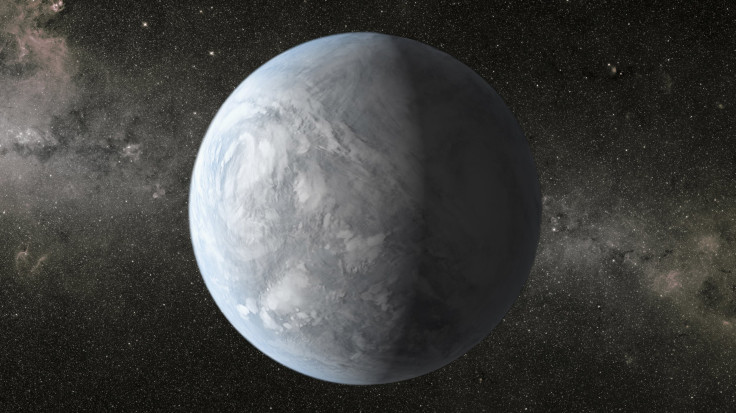
Astronomers reported that there could be as many as 40 billion habitable Earth-size planets in the galaxy, based on a new analysis of data from NASA's Kepler spacecraft, which was launched with the express purpose of finding Earth-sized planets throughout the galaxy. Kepler has reported 833 new candidate planets, bringing its three-year total to more than 3,500 exoplanets found. Of the newly reported planets, 10 were both less than twice the size of Earth and orbiting within the so-called habitable zone. Also known as the "Goldilocks zone," the range of orbital distances from a particular star in which water could exist in a liquid form, neither boiled away nor frozen solid.
Kepler's findings are also interesting for their implications about human expansion into the universe. The closest human-habitable planet yet found beyond our solar system is probably a mere 12 light-years away; that's just around the corner, in astronomical terms. "What this means is, when you look up at the thousands of stars in the night sky, the nearest Sun-like star with an Earth-size planet in its habitable zone is probably only 12 light years away and can be seen with the naked eye. That is amazing," said UC Berkeley graduate student Erik Petigura, who led the analysis of the Kepler data.
Geoffrey Marcy, also of UC Berkeley, who supervised Petigura's research and was a co-author of the paper along with Andrew Howard of the University of Hawaii, added: "With tens of billions of Earth-like planets in each galaxy, our entire universe must contain billions of billions of Earth-like planets." At a news conference discussing the results, Marcy said he felt "a little tingly" with the findings because "This is the most important work I've ever been involved with. This is it." Natalie Batalha, a Kepler leader from the NASA Ames Research Center, also weighed in, describing the project and its members as "the best of humanity rising to the occasion."
Petigura's analysis is an important factor in the so-called Drake equation used to estimate the number of intelligent civilizations in the universe. "It seems that the universe produces plentiful real estate for life that somehow resembles life on Earth," he said. Although these new findings open many doors to further research, there are still a number of caveats. Marcy explains them. "Do these planets that orbit their stars in orbits that remind us of the Earth, the size of the Earth, do they actually have liquid water? Do they have lakes and oceans within which the biochemistry of life could flourish? Do they have atmospheres that are conducive to life? Do these planets have a moon that might stabilize the spin of their planets? So there could be properties of planets that render them suitable for life that we don't even know about."
Nevertheless, Marcy remains hopeful. Marcy told PBS, "The most exciting thing I think for the future is to actually search for intelligent technological life on any of these planets. Are there intelligent beings there? Maybe we can pick up the Andromeda "NewsHour" from Alpha Centauri and pick up their radio and television transmissions." He added that hopefully soon other life forms will be found in other planets. "There are scientists working day and night right now using radio telescopes, optical telescopes, infrared telescopes, hoping to pick up the laser communications, the radio transmissions from any other intelligent civilization. So it's possible that in the next few years or decade, there could be the first detection of intelligent life elsewhere in the universe."
© 2025 Latin Times. All rights reserved. Do not reproduce without permission.





